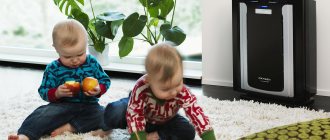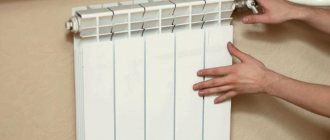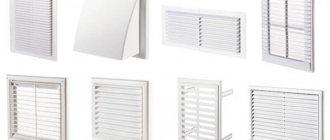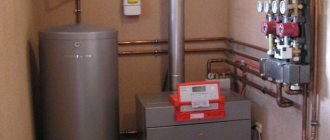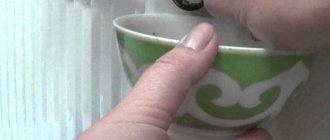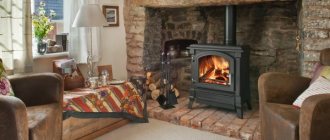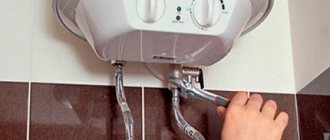Most of us associate the concept of comfort with the air temperature in the room. Many people do not think about such a parameter as relative humidity.
Meanwhile, its importance for the microclimate of the home is great. Low humidity levels observed in winter lead to a number of negative consequences.
From our article you will learn how to increase the humidity in a room, why you have to do this and what value should be considered the most appropriate.
What are the dangers of dry indoor air?
In winter, city apartments turn into small thermal locomotives: the rooms are actively heated not only by a centralized heating system, but also by heaters. These indispensable devices dry out the air in the room, do not allow full breathing and at the same time dry out the skin. A deficiency of pure oxygen increases the likelihood of a number of serious diseases.

What are the dangers of dry indoor air for the body?
The following symptoms indicate that the humidity level in the apartment is violated:
- spontaneous headaches;
- apathy, chronic fatigue;
- sleep disturbance;
- dry skin on hands, lips;
- irritation and pain in the eyes;
- dryness in the nasopharynx.
Dry air in the house has a detrimental effect on the structure of wood fibers in furniture, which can lead to drying out and cracking.
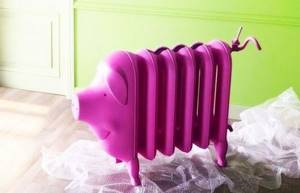
Humidity in the room must be controlled primarily by owners of musical instruments, especially wooden ones. Violation of optimal standards can lead to irreversible processes, drying out of the fibers of natural materials.
How to achieve the norm?
So, the humidity has been measured. It's good if it's within the normal range, but what if the results are too low or high. How to adjust indicators?
Humidify dry air
By purchasing an air humidifier with automatic control, you can transfer all concerns about the microclimate to it.
The device has a built-in hygrostat, which turns on the unit when the humidity drops. The owner can only periodically add water.
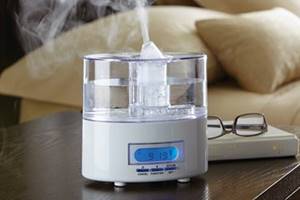
There are three main types:
- Steam humidification.
- Ultrasonic.
- Using cold evaporation.
In short, a steam kettle is the same as a kettle, only with controlled moisture release.
It must be used with caution so that no one gets burned. And the noise of boiling water can be annoying.
The second and third methods require changing filters. But the ultrasonic one benefits from the fact that it operates silently for humans, and there is a fan in the cold evaporator.
But you need to take into account that if there are salts in the water, they will sooner or later appear on glossy surfaces and screens as white stains (so it is better to use distilled water).
When choosing a device, it is important to choose the right area, otherwise the effect may be disappointing.
But even if you don’t have a humidifier at home, there are ways to improve the atmosphere:
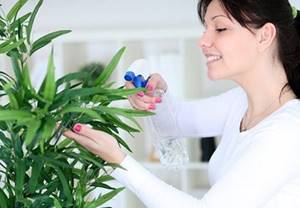
- A wet towel is placed on the batteries.
- Small containers with water (plates, for example) are placed on the stove or window sills. You will need to add water to them less often than wet a towel.
- Leave the door to the bathroom open (the humidity is higher there).
- Breed fish in an aquarium.
- You can dry your laundry indoors after washing.
- Buy a decorative “eternal fountain”.
- Decorate your home with indoor flowers.
- Periodically spray the air with a spray bottle.
- Wipe the floor, do a wet cleaning.
In a word, open water in any form is welcome in a dry house. You can use your imagination and make bouquets, compositions from coniferous branches, place floating candles in vases with water, fragrant baths with drops of essential oils, etc.
If you live in a region with a humid climate, you have probably encountered the problem of excessive air humidity. In such cases, a dehumidifier is used to normalize the humidity. Dehumidifier for an apartment: we will tell you in this article how to choose the optimal model.
We’ll look at how to make a candle heater with your own hands in this topic.
Dry humid air
If you have the funds, this problem is also not a problem, because there are special devices - air dehumidifiers. In them, the air is cooled, excess moisture turns into drops of water, which flow into a collection container, and drier air is heated again and returned to the room. The advantage of this device is that in hot weather it can be used as an air conditioner, cooling the air.
What can you do without a dehumidifier to make your apartment less humid:
- Make good supply and exhaust ventilation (plastic windows and sealed doors cut off the flow of oxygen into the house, and not all houses pay attention to ventilation).
- If funds are limited, install forced exhaust at least in the kitchen and bathroom.
- It is imperative to ventilate the rooms as often as possible: immediately after cooking and taking a shower (and it is better to open the window for 5 minutes than to open the window slightly for half an hour).
- Allow the sun's rays to warm the room through the glass.
- Install air conditioning and fan.
- Operating household appliances – refrigerator, TV, computer – dry the air.
- Do not dry laundry indoors.
In short, there should be more air movement in the house, but the amount of water that can evaporate is kept to a minimum. You should not set up a greenhouse in a damp house, leave uncovered containers of water, vases with flowers, or an aquarium.
For finishing you should strive to use natural materials. For example, you can prefer simple paper wallpaper to vinyl wallpaper, and wood to plastic. But you should be careful with drywall. It is classified as a natural material and indicates its ability to absorb moisture.
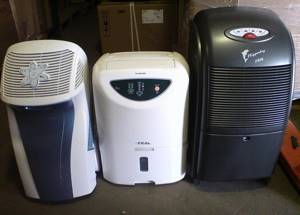
Air dryers
But this is also its problem - absorption cannot continue indefinitely, but wet cardboard and plaster are an excellent environment for the development of micro life. So drywall can become a breeding ground for fungi.
If moist, stale air rises from the old basement, the listed remedies will be ineffective - a major overhaul is needed!
On sale you can find special “Stop Moisture” products designed to reduce humidity using adsorbing crystals.
You can make your own small dehumidifier using silica gel. These are white balls, a bag of which is placed in new shoes and soft toys. A kilogram of the substance costs about 50–70 rubles.
How to determine the humidity level in an apartment
So, what should the air humidity be in a living space? Experts are unequivocal in their opinion - a value in the range of 40 to 60% is considered the norm, and this is true not only for people, but also for technology. The air humidity in the room is determined using simple techniques.

- Use a hygrometer - a device that determines humidity.
- Use the Assmann table. The temperature is then measured using wet and dry bulb thermometers. The obtained readings are correlated with the corresponding values in the table.
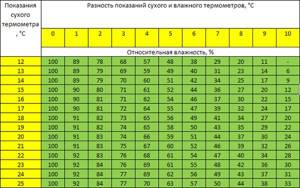
- Pour water into a glass glass and then put it in the refrigerator for a few minutes. Then the glass must be taken out and placed away from the warm radiator. If condensation from the walls dries in 5 minutes or less, then the air humidity in the house is insufficient.
Conventional methods do not allow one to accurately determine the optimal values, so it is better to use technical means. If the air humidifier detects that the humidity level in the room is below normal, immediate measures must be taken to increase it.
Method 3 – vessels with water
This very simple technique has been known since ancient times. Place water tanks (vases, jugs, decorative buckets, bowls) throughout the apartment (can be on window sills or near radiators). Evaporating moisture will provide good air humidification. The main thing is not to forget to add water on time.
Important: this effective method has a significant drawback - after some time, bacteria and microorganisms will begin to multiply in the water. To prevent this from happening, wash them well.
Is it worth buying a humidifier for your home?
If a moisture deficiency is detected, it is most often recommended to humidify the air using specialized climate control devices. The most effective way to do this is through humidifiers that spray small particles of moisture into the surrounding space. Due to this, hydration is achieved.
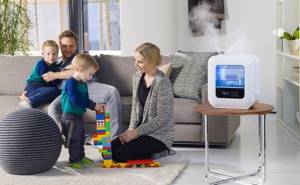
Advice! How to increase the humidity in a room faster and more efficiently? – Use a climate control device that will saturate the room with the optimal level of moisture.
The device takes up minimal space, is convenient to use, and does its job perfectly. However, it is necessary to focus on some disadvantages of this type of device:
- The device constantly consumes electrical energy; during round-the-clock operation, this figure will be quite noticeable. As a result, we get a dependence - increasing humidity turns out to be unprofitable from an economic point of view;
- high price;
- air humidification is accompanied by characteristic noise. At night it is clearly visible and can cause some discomfort.
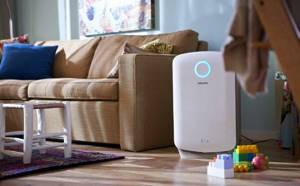
If the air humidity in the apartment is below the recommended standards, and humidifying devices operate with significant disadvantages for you, we recommend that you pay attention to alternative ways to humidify the air in a room without a humidifier. They are extremely simple, affordable and effective.
The benefits of air humidification
It is recommended to control the humidity level and, if necessary, increase it in order to:
Prevent the occurrence of serious diseases
This is not an exaggeration: sufficiently humidified air optimizes heat exchange processes in the human body. This is extremely important for children and adolescents - their growing bodies produce impressive amounts of heat through the lungs.
If the baby regularly rests in a room with “overdried” and stagnant air, the result will be thickening of the blood and deterioration in the functioning of internal organs. Because during sleep, the child’s body in such negative conditions will begin to lose excessive amounts of moisture.
The humidity of the microclimate is also directly related to the risk of contracting airborne diseases and the characteristics of their course:
- Cough, difficulty breathing, stuffy nose and other manifestations associated with respiratory pathologies are alleviated at an air humidity of 40-60%;
- In well-humidified air, any viruses die faster.
Another important point: the condition of the mucous membranes. If there is insufficient air humidity, cracks and crusts appear on the drying shells. The natural processes of neutralizing harmful microorganisms that enter our body through the nose and mouth are disrupted. It becomes difficult to breathe.
In extreme cases, blocking the normal activity of the mucous membranes and problems with free breathing result in bronchitis, otitis media, asthma and other extremely serious diseases. Children who are in poor health may develop dysbacteriosis and kidney failure.
Create favorable conditions for work and rest
It is simply impossible to concentrate or, on the contrary, fully relax in an unventilated and hot room with air humidity less than 20%.
Try to create a favorable microenvironment - both work and rest will become much easier.
Prevent premature aging and dehydration of the skin
Dry air negatively affects the condition of nails, hair, and skin. With a good level of humidity, the likelihood of rashes and skin irritation on the body and face, and the formation of wrinkles, decreases.
Important: insufficient microclimate moisture is a proven cause of accelerated loss of moisture from the epidermis, disruption of the barrier functions of the skin, and inflammation.
What happens if the air is overly humidified? With an indicator of 70% or more, the sebaceous glands will begin to produce a larger volume of sebum. However, this will not increase the level of moisture in the skin - to return the amount of lipids to normal, it will be enough to simply wash your face.
Create a favorable microclimate for plants
Houseplants, just like people, need an optimally humid microclimate. The degree of air humidity affects the condition of the stems and leaves of plantings, the rate of seed germination and flowering.
Preserve decoration and interior
Dry air shortens the working period and worsens the appearance of furniture (made of natural fabrics, wood, natural stone), decorative items and household appliances. Wooden interior items suffer especially badly from it - they dry out and crack. Parquet planks are delaminating.
Fans of painting need to be extremely careful - in a dry microenvironment, the paint will begin to peel away from the canvas. And also owners of pianos, violins, guitars and other musical instruments – they will have to tune them more often.
Green plants to combat dryness
Plants actively absorb carbon dioxide, which in itself is beneficial for humans, and also saturate oxygen with moisture. At the same time, the air is ionized and purified from small particles of dust and bacteria. There are certain plants that most effectively combat dryness and oxygen deficiency.
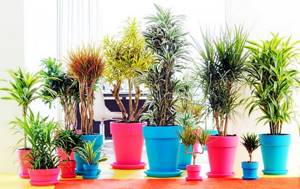
Optimal air humidity is achieved using:
- orchids;
- fern;
- phytonia;
- hypoesthesia.
The plants listed above require regular and thorough watering, especially in winter. There are also alternative options:
- hibiscus;
- indoor linden;
- house fern;
- ficus

Whatever “greenery” settles in your home, you will soon be pleasantly surprised and pleased by such a neighborhood.
Household appliances with humidification function
Some home climate control devices, in addition to their main function, can replace a humidifier.
A fan with a water spray helps humidify the air in the apartment. In summer, the device is turned on for a long time, the moisture in the air will cool the room. In winter, it is enough to turn on the fan for 10 - 15 minutes to achieve the desired result.
At temperatures down to -5ºС, it is possible to use a split system with a humidification function to heat the air in the apartment.
Some types of fireplaces use water vapor illuminated by a red lamp to create a 3D flame effect. Models with an open firebox can easily cope with humidification.
Drying wet laundry
One of the simplest “grandmother’s recipes”: by hanging washed clothes or clothes in a room, you can notice how significantly the humidity in the surrounding space increases. Often this method is not used for completely objective reasons - there is a possibility of mold and fungal spores. But if the air is very dry in winter, you can use this radical method. The easiest and safest way is to wet a large towel and hang it over the radiators. As the moisture evaporates, saturation with small particles of steam will occur. This method is not suitable for electric heaters.
So, how to increase air humidity the traditional way? – The technique with a wet bandage has proven itself quite well. An ordinary glass jar is filled with liquid, and then a bandage is dipped into it. One end of it is lowered to the battery, and the other is left in the container.
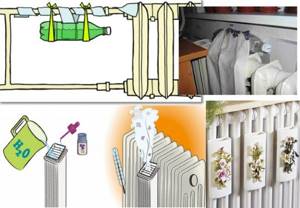
Such a simple design does not require any control, since the water will evaporate and be supplied on its own. Several similar solutions will allow you to fill the room with moisture in 1-2 hours.
We increase air humidity with devices
The best solution to our problem will be a special air humidifier. There are only three types of such devices:
- traditional,
- steam
- and ultrasonic.
Traditional
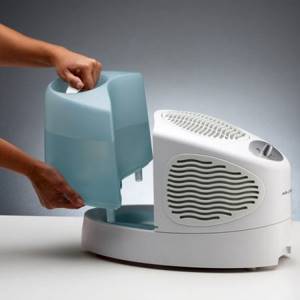
It is the simplest device and works by evaporating cold water. The principle of operation is simple: you pour prepared water into a special tank, and then the device turns on the fan and drives the water through the internal filters.
The only drawback of such a humidifier is that they only need to use distilled water. If this is neglected, the filters will soon fail.
Steam
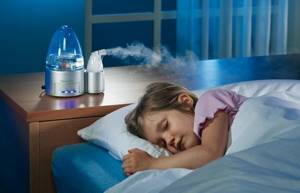
Such models no longer operate using cold water, but rather using steam, which has a temperature of 60 degrees. There are no filters here, but there are a couple of electrodes, due to which the water heats up and evaporates.
The device is safe, so there is no need to worry. If you do not manage to add water to the tank in time, the humidifier will turn off by itself. The main thing is to keep children away from the device while working!
Ultrasonic

The most modern and popular humidifier today.
The device sends vibrations across a special plate, thanks to which water, upon contact with the plate, is broken into particles and then sprayed around the room. The device is safe, silent and compact. Among the disadvantages is that you must use distilled water.
There is no such thing as too much water or how to humidify the air at home!
You can place containers of water around the perimeter of the room. It should be wide to increase the evaporation area. These can be ordinary shallow plates. But it’s better to refuse mugs and glasses.

Advice! Before increasing the humidity in the apartment, keep in mind that the water will have to be changed daily. Mosquito larvae, insects and bacteria actively reproduce in a humid environment.
However, if you don’t want to turn a small room into a parade of bowls, you can resort to alternative methods.
How to humidify the air in an apartment without a humidifier - a rating of the best methods.
- A decorative fountain will not only enliven the interior of your home, but also fill the space with a damp consistency. These small pieces fit easily into any design style. On sale there are options for ancient castles, works of sculptural art, and Japanese bonsai.

- An aquarium is the best choice for large spaces. The main advantage of such an artificial source of moisture is that it itself “determines” how much liquid there should be in the room. You can double the amount of oxygen produced by using underwater plants. But this is the case when it is necessary to soberly assess your own capabilities, since the aquarium and its inhabitants require regular and careful care.
For people who care not only about optimal humidity in the apartment, but also the aesthetic side of the process itself, we recommend taking a closer look at decorative fountains. If you place green plants near them, you can create an original interior composition, as well as gain access to a portion of moist oxygen.
Types of home humidifiers
If a child has an allergy, it is necessary to constantly monitor the level of humidity in the apartment. To maintain optimal parameters, it is recommended to buy a special humidifier. Modern industry produces several types of such devices: traditional, ultrasonic and steam. It is recommended to consider the advantages of each type before purchasing. The main parameter is the area of the room that should be humidified.
Standard Equipment
A natural type of evaporation is produced by cold-type humidifiers. These devices consist of a water tank, a filter and a fan. The advantages of the device are minimal electricity consumption , preservation of functionality in the event of all the water evaporating, stopping operation when optimal humidity is reached.
Among the disadvantages are the frequent replacement of filters, the use of purified liquid, and the inability to independently regulate the level of humidity. The device is programmed to receive a humidity of 60%, when this indicator is reached it turns off.
Steam design
Models of this type produce hot steam during operation. Steam humidifiers are characterized by fast humidification, the ability to use tap water, the absence of filters, and automatic shutdown when there is a lack of liquid.
Please remember that there is a risk of burns if handled carelessly. This technique consumes a large amount of electricity, which can be considered a significant disadvantage. The devices are stable and mobile, but they should not be installed in children's rooms. Pets can also be injured by these devices.
Ultrasonic device
The latest developments have made it possible to create a device that operates on high-frequency vibrations of a special film (membrane). It helps convert water into cold steam. The latest generation devices are in demand due to their safety, compactness, efficiency, humidity control , speed of humidification and reasonable cost.
Some models of modern air conditioning systems are equipped with humidification devices. Special built-in systems are capable of purifying and humidifying the air according to certain parameters. They are usually assembled from several devices.
One of the most important indicators of the microclimate in the house is the optimal level of humidity. But when using special devices, moderation should be observed: low humidity threatens deterioration of well-being, and increased humidity threatens the formation of mold and mildew.
Ventilation is unrivaled
When answering the question of how to humidify the air in a room, it is advised to ventilate your home more often. In spring, autumn and even winter there is enough moisture in the air to make a person feel comfortable. 3-4 single airings lasting 20 minutes are enough to improve your well-being and renew the oxygen in the room.

Professionals advise combining ventilation with wet cleaning. Yes, and a regular spray bottle is suitable for spraying water. In this case, the effectiveness of air baths increases significantly.
Now you know how to humidify the air at home without expensive devices. These methods are simple, accessible and effective.
Special devices for removing excess moisture
Ventilation – all apartment buildings and premises built in compliance with sanitary standards and rules are equipped with a network of ventilation ducts. These holes in the walls should not be covered with furniture, wallpaper or other obstacles. They are located under the ceiling and remove excess water vapor.
Hoods are an indispensable device in the kitchen. The steam that appears during cooking is forced out into the street, and the smell of cooked food disappears. It is important to install air exhaust in the bathroom.
This device is similar in function to a kitchen hood, but is installed in the bathroom. It makes sense to install a hood in the bathroom if the situation is really dangerous and mold appears on the walls and furniture.
Oil radiator with fan - in rooms with a small area, a conventional oil portable radiator with a fan can cope with excess moisture and dampness. This device takes air, passes it through the heating element and produces dry and warm air. The two disadvantages are danger for children who can get burned and cannot be used in the summer.
An air dehumidifier or evaporator is a special device for removing excess water vapor from the air. The fan sucks air masses into the device, evaporates the moisture and produces dry air. Excess moisture remains in the reservoir. Such a dehumidifier can dry from 15 to 300 liters of raw air per day. There are portable and stationary models. It does not produce heat, so it can handle both winter and summer.
